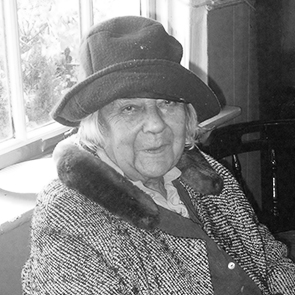The Day of the Flood
Thursday 13 March 1947, was my mother’s forty-sixth birthday and is a day I shall never forget. In 1938, two years after my father’s death, my mother and I moved to 7 Kennet Place, one of the cottages in the inverted L shaped terrace at the southern end of the Parade in Marlborough. Our four-roomed cottage faced the northern arm of the river and was extremely primitive; the front door opened straight on to the pavement from the living room, there was a tiny scullery with a gas cooker, and two bedrooms; a coal fire, and a gas light in the living room provided the only heating and lighting, apart from an oil stove and candles; the water supply came from an outside tap shared with the next door neighbour, and which required constant vigilance to prevent it freezing solid in the winter. The toilets stood in a row at the top of the tiny gardens and, like the taps, were shared, one between two cottages. However the outlook was pleasant enough.
The Town Mill was still in existence and after being used as a billet for soldiers had reverted to its pre-war role as a youth hostel. It stood at the western end of the tapering tongue of land – where the Town Mill Housing estate was built at the end of the 20th century – between the two arms of the river. At the narrowing eastern end was the public swimming bath which resembled an open-topped box mounted on four legs. Directly opposite our cottage, on the other side of the river, was the Mill Garden, where there was a fine row of flowering current bushes planted to screen the row of toilets erected during the war for the use of soldiers in the Mill.
After enduring the heavy snow and bitter cold of the winter of 1947, the sudden rise in the temperature at the beginning of March was very welcome, but the warmth began a thaw of the masses of lying snow which was exacerbated by heavy rain on 12 March, causing tons of water to flow down the hillsides into the valley and completely overwhelmed the river, flooding the adjacent fields. On the fateful day, my mother arrived home from work at 3 o’clock, but although the river was level with the top of the banks she was not unduly worried, until workers from the Tannery at the bottom of Angel Yard, and who had been sent home early, banged on the door to warn of the impending disaster. I then worked for Mr. and Mrs. Say, who ran a drapery and gents outfitters in the High Street, in the building now occupied by Viyella, and my mothers first thought was to race up there with my Wellingtons. When she got back, water was coming under the back door, and she had to concentrate on getting food, water, the oil stove, matches and candles, upstairs.
By the time I came home at 5 o’clock, the water was knee-deep in the road, and up to the fireplace indoors; looking out of the front bedroom window, we saw, stretching right across the garden boundaries of the houses on the north side of George Lane, a vast coffee-coloured lake flecked with white foam, uprooted trees and other debris.
The water subsided around midnight, leaving behind a black, evil-smelling mess of mud and sewerage, and we were forced to live upstairs for a fortnight while we cleaned it up. Of course we were not the only victims as the Parade and part of the London Road also suffered.


